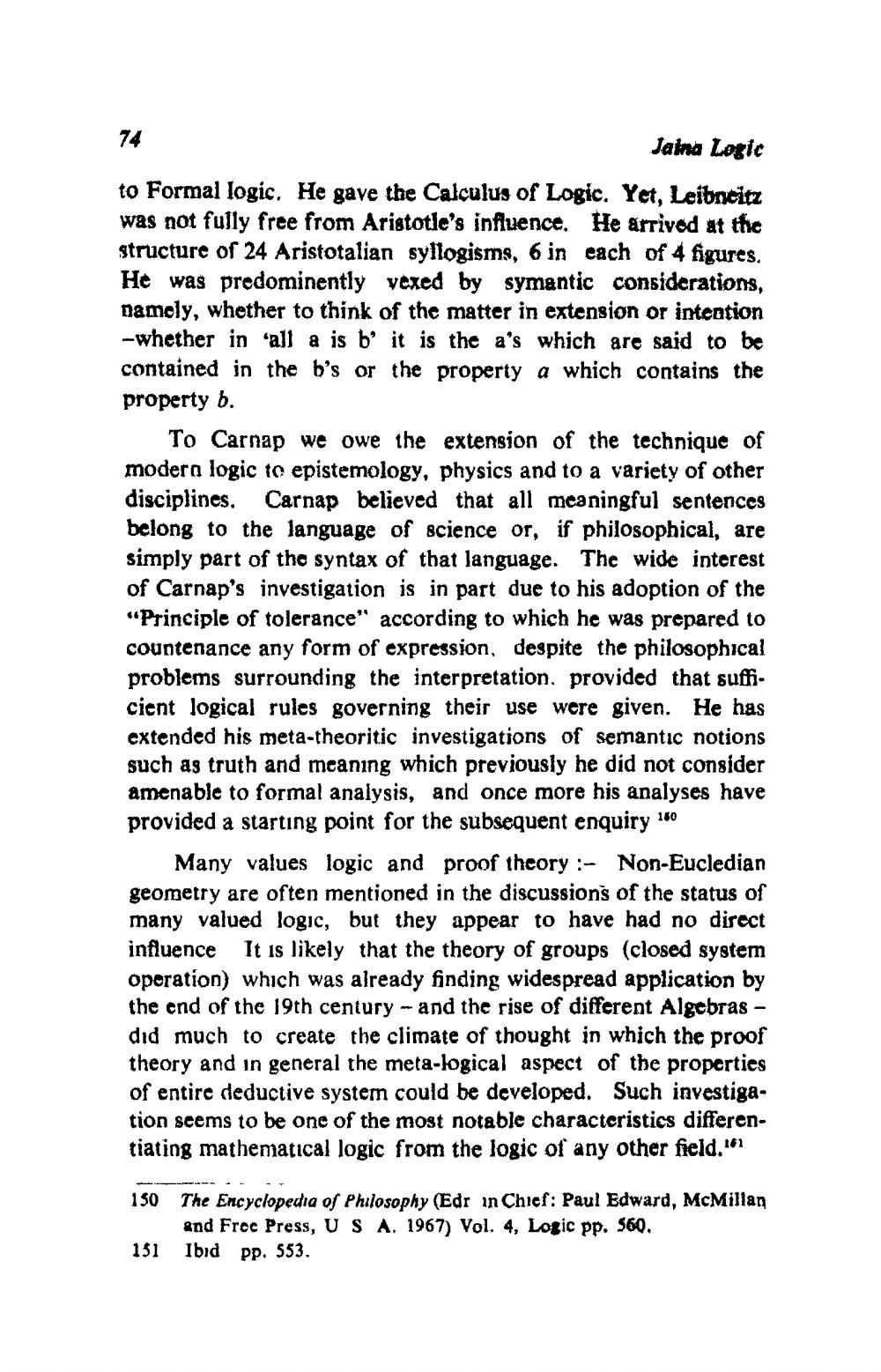________________
Jaina Logic to Formal logic. He gave the Calculus of Logic. Yet, Leibneitz was not fully free from Aristotle's influence. He arrived at the structure of 24 Aristotalian syllogisms, 6 in each of 4 figures. He was predominently vexed by symantic considerations, namely, whether to think of the matter in extension or intention -whether in all a is b' it is the a's which are said to be contained in the b's or the property a which contains the property b.
To Carnap we owe the extension of the technique of modern logic to epistemology, physics and to a variety of other disciplines. Carnap believed that all meaningful sentences belong to the language of science or, if philosophical, are simply part of the syntax of that language. The wide interest of Carnap's investigation is in part due to his adoption of the "Principle of tolerance" according to which he was prepared to countenance any form of expression, despite the philosophical problems surrounding the interpretation, provided that sufficient logical rules governing their use were given. He has extended his meta-theoritic investigations of semantic notions such as truth and meaning which previously he did not consider amenable to formal analysis, and once more his analyses have provided a starting point for the subsequent enquiry 160
Many values logic and proof theory :- Non-Eucledian geometry are often mentioned in the discussions of the status of many valued logic, but they appear to have had no direct influence It is likely that the theory of groups (closed system operation) which was already finding widespread application by the end of the 19th century - and the rise of different Algebras - did much to create the climate of thought in which the proof theory and in general the meta-logical aspect of the properties of entire deductive system could be developed. Such investigation scems to be one of the most notable characteristics differentiating mathematical logic from the logic of any other field."
150
The Encyclopedia of Philosophy (Edr in Chief: Paul Edward, McMillan and Froc Press, U S A. 1967) Vol. 4, Logic pp. 560. Ibid pp. 553.
151




